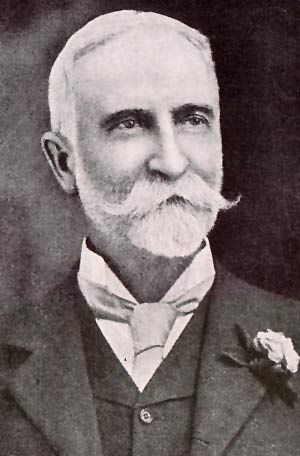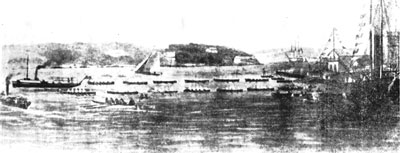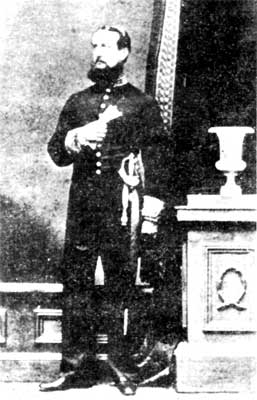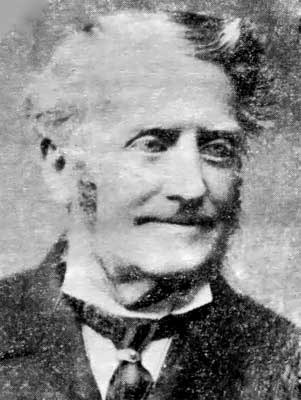
Sydney Rows
A Centennial History of the Sydney Rowing Club, 1970, by A L May
Table of Contents
Chapters
- Preliminaries: before 1870
- Foundations: 1870-1880
- New Clubs: 1880-1890
- The Amateur Question: 1890-1900
- Sydney on Top: 1900-1910
- Henley and War: 1910-1920
- Pearce and Mosman: 1920-1930
- Financial Problems: 1930-1940
- War and Wood: 1940-1950
- Strength and Stability: 1950-1960
- On Top Again: 1960-1970
Appendices
2. Foundations: 1870-1880
On 5 March, 1870, the following advertisement appeared in the Sydney Morning Herald:
"Rowing Association. - A Meeting interested in the advancement of amateur rowing and the formation
of a Rowing Association, will be held on Monday next, at half-past 7 p.m., at the Oxford Hotel, King-street.
Henry Freeman, Hon. Secretary pro tem."
On Monday the 7th, the meeting was duly held and, next day, the Herald reported that "the Sydney Amateur Rowing Club may now be considered an established affair". The meeting was attended by twenty-five gentlemen and "every one present was unanimously of opinion that the formation of a club for the purpose of improving and encouraging amateur rowers was much needed in Sydney".
George Thornton was to have chaired the meeting but he was unable to remain for long and Freeman took over. After the objects of the meeting were stated, general discussion ensued.
Finally, Q. L. Deloitte moved "that it is desirable that steps should be taken for the formation of a club, having for its object the encouragement and improvement of amateur rowing in this colony". It was seconded and carried "without a dissentient voice".
A provisional committee was established and a sub-committee deputed to draw up rules. A further sub-committee was appointed to inquire into the cost of boats and to select a site for a boat shed. Subscription rates were also decided: one guinea per quarter for active members, and two guineas per year for "honorary members". At subsequent meetings, a code of rules was approved and the club's first office-bearers elected. His Excellency the Earl of Belmore, Governor of the colony, consented to be patron (and sent a donation of ₤5), while George Thornton was elected president. Q. L. Deloitte became captain, with Henry Freeman honorary secretary and Allan Yeomans honorary treasurer. The six-man committee was Messrs. C. W. Rudd, W. Smith, P. J. Clark, H. Wickham, L. Herring and C. Bransby.

Q L Deloitte
Attainment of a club house and of boats was, of course, a first concern. The initial meeting favoured a site on Government land on the eastern side of Circular Quay (not far from the present Opera House site) and, aided by Thornton's "powerful influence", permission to occupy the site was quickly forthcoming. A tender for construction of the building was soon accepted for the sum of £ 195!
A two-storey construction was planned with an area for the boats and, upstairs, a reading room and a bathroom with twelve shower baths. The plans allowed for later construction of wings on both the northern and southern sides. Building problems were encountered, however, and, at one stage, the contractor threw up his contract. Fortunately, "by means of the club's solicitors, a compromise was effected".
While the initial end-of-April date for completion was not achieved, the building was sufficiently advanced by the end of June to allow the first "club day" (scheduled to take place each Wednesday and Saturday) to be held.
At that stage, it was "already filled up with every convenience for the comfort of members". Orders had also been promptly placed for thirteen boats and for the necessary sculls and oars. There were to be six fours, of which four would be "gunwale gigs" and two outrigger gigs, six light skiffs and one "six pairs scull express boat". The fours cost between ₤32 and ₤40 each, the light skiffs about ₤22 each and the six-pair ₤30. Some of the contractors again gave "a great deal of trouble and annoyance, and were very slow in completing their work". By 29 June, the first club day, five boats had been received and all appeared to be on hand by the club's opening day at the end of August.
Election of members took place at most of the early meetings, and the response was very heartening. By the second meeting, on 10th March, the number had topped the 100 mark and by 1 April the 200 figure had been passed. By the end of August, the club had some 340 active and honorary members (and, it should be noted, the entire male population of the Sydney area at this time was only about 66,000). Again, however, some problems were encountered: the club's first annual report records that "a large number of persons who asked to be proposed never responded to their election".

At the Opening of the Sydney Rowing Club
The official opening of the club was an impressive occasion. Following the first club day, members concentrated on practising for the "Grand Boat Procession and Demonstration" which was to be the highlight. On 27 August, 1870, the club was inaugurated.
The weather was not kind: rain fell and a cold wind prevailed for most of the time. "While this interfered with the attendance of spectators, it did not daunt the spirit of the members themselves, for in almost full strength they turned out to man their boats."
Twenty-one boats, several the private property of members, took up their positions in two divisions extending across the cove. All boats carried the club flag-white, with a blue cross-and all crews wore the club uniform-white straw hat with a blue and white ribbon and white shirt and trousers.
The boatshed itself was bedecked with flags, both inside and out. About 3.30 p.m., the steam yacht Fairy, with His Excellency, the Earl of Belmore, and George Thornton among those on board, steamed slowly between the two lines of boats to the club wharf.
His Excellency, who was cheered, landed and inspected the boatshed and club rooms. He then returned to the wharf and declared the club to be opened. "Three cheers were thereupon given for the club." Then the procession commenced. The Fairy steamed out between the two divisions of boats and, under the command of Deloitte in a small steam barge, the "little fleet" followed the Fairy and formed into a single line across the harbour from Dawes Point. "The boats then pulled down the harbour abreast, presenting a very pleasing sight." Approaching Fort Denison, the order was changed and the island was rounded three abreast. They continued in this style to Milson's Point and then again changed positions rounding the Government steamer Thetis, with its complement of spectators, in single file and pulling across the harbour and round Circular Quay in the same fashion.
At the boat club, they again fell into two divisions and followed the Fairy round Fort Macquarie to the Government jetty where His Excellency landed, the crews giving him three more hearty cheers.

Earl of Belmore
The club's first dinner was held that evening. Some seventy members gathered at M. Courvoisier's "Caf de France" at the corner of King and George Streets. The toast list tells the story: "His Excellency, the Earl of Belmore"; "Success to the Sydney Rowing Club"; "The Land We Live In" (the latter responded to by George Reid, a future Prime Minister); "The Press"; "Lady Belmore and the Ladies of the Colony"; "The President of the Club"; and, finally, "The Captain, Secretary and Treasurer of the Club". Then the festivities came to an end.
The next major undertaking was the club's first regatta. It took place on 17 September, with a large crowd of spectators present at various vantage points. The Thetis acted as flagship, being moored opposite the club in Sydney Cove, with a good number of visitors on board.
The weather was again unpleasant, with a strong southeasterly whipping up a heavy sea: "dark masses of clouds swept over the harbour and threw a gloom over everything". Little wonder, then, that "the pulling at times did not quite come up to the mark". Six races were rowed. Members who had never won a prize were eligible for the first, pulling "two pairs of sculls", and the course was from the club house around a ship in Lavender Bay and back. However, according to the Herald, "there was nothing very remarkable about the race, and therefore comment is not needed". John Blaxland and C. Barton, rowing in Thetis, won from E. King and T. Stokes in Leisure Hour. The second race, a sculling event in heavy boats over 21/4 miles, proved more interesting. It was won by Grantley Fitzhardinge from Henry Freeman with Edmund Barton, the future Prime Minister of the Commonwealth, third. "Barton managed to keep the lead until after reaching Kirribilli, but Fitzhardinge succeeded in rounding the red buoy about two lengths ahead. Here Barton was collared by Freeman and - whether it was done deliberately or not we cannot say - his boat slowed down and he pulled right into Freeman". Last home in the field of eight was Deloitte. Two crews entered in the third race, four-oared gigs for those who had never won a public prize, and it was won by C. Tiley, E. King, T. Stokes and C. Bransby. The winner of the fourth race, the sculls for those who had never started in any public race, was, once again, C. Barton.
The main race of the day was the fifth, for four-oared gigs. Curlew was first, the crew comprising John Blaxland, R. Hayes, Edmund Barton and F. Blaxland. Thetis was second, with Deloitte, Freeman, Jim Clark and Charles Deloitte (Q.L.'s brother) stroking, and in third place was Adelphi, its crew being Charles Oliver, Jim Oatley, John Myers and C. Fitzhardinge. Alma Mater finished fourth, the crew being Yeomans, Grantley Fitzhardinge, Richard Teece and E. Iceton. Curlew was fortunate to win, as its crew, rowed past Adelphi and Thetis when the latter two clashed.
The final race at the first-ever Sydney Rowing Club regatta was a "Dos-a-Dos Tournament" which "afforded an immense amount of amusement to the spectators". Two skiffs were tied stern to stern, and the crew which first towed the other boat to a point on either side was the winner. It took "a fierce struggle of about fifteen minutes" before one of the crews proved victorious. "This ended the afternoon's excellent sports."

George Thornton
George Thornton's background is of further interest. He was born in Sydney in December, 1820 and, after starting work in the customs house, successfully branched out on his own as a shipping and customs agent. He became a city councillor in 1848 and subsequently Mayor, his first act being to agitate for removal from the streets of Sydney of "those barbarous relics of old-time punishment", the stocks and pillory. He was also to be elected to Parliament several times. He was an excellent swimmer (always taking a dip each morning at Manly) and was much interested in sailing as well as rowing.
He used to delight in recalling his role in the production of the first issue of the Sydney Morning Herald in April, 1831. When setting the type, the compositors were left in the dark as the candles burnt out. The overseer sent over to the nearby home of Mr. Thornton, Sun, for more light. Young George was entrusted with three candlesticks and tallow candles, by the aid of which the first issue of the Herald was set. He was also very proud of the fact that he had taken part in the very first Anniversary Regatta in 1837.
